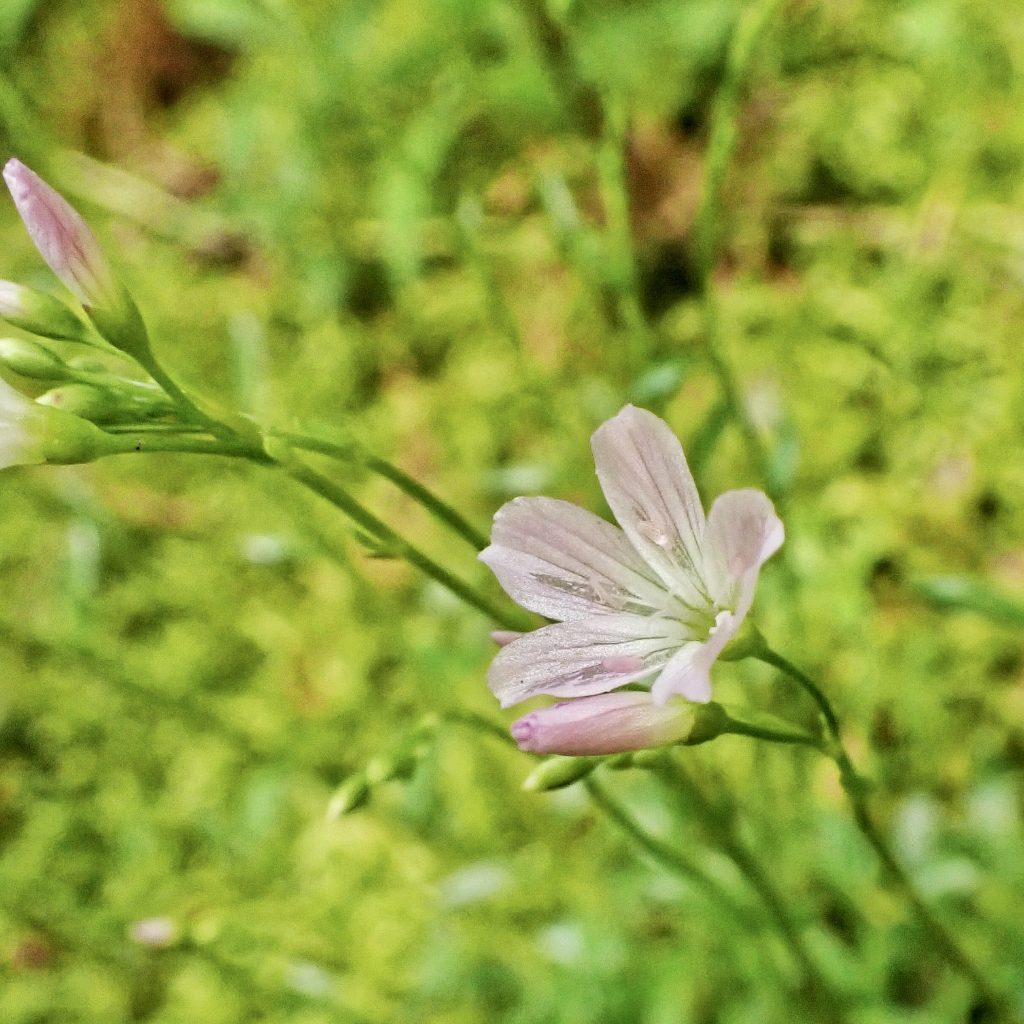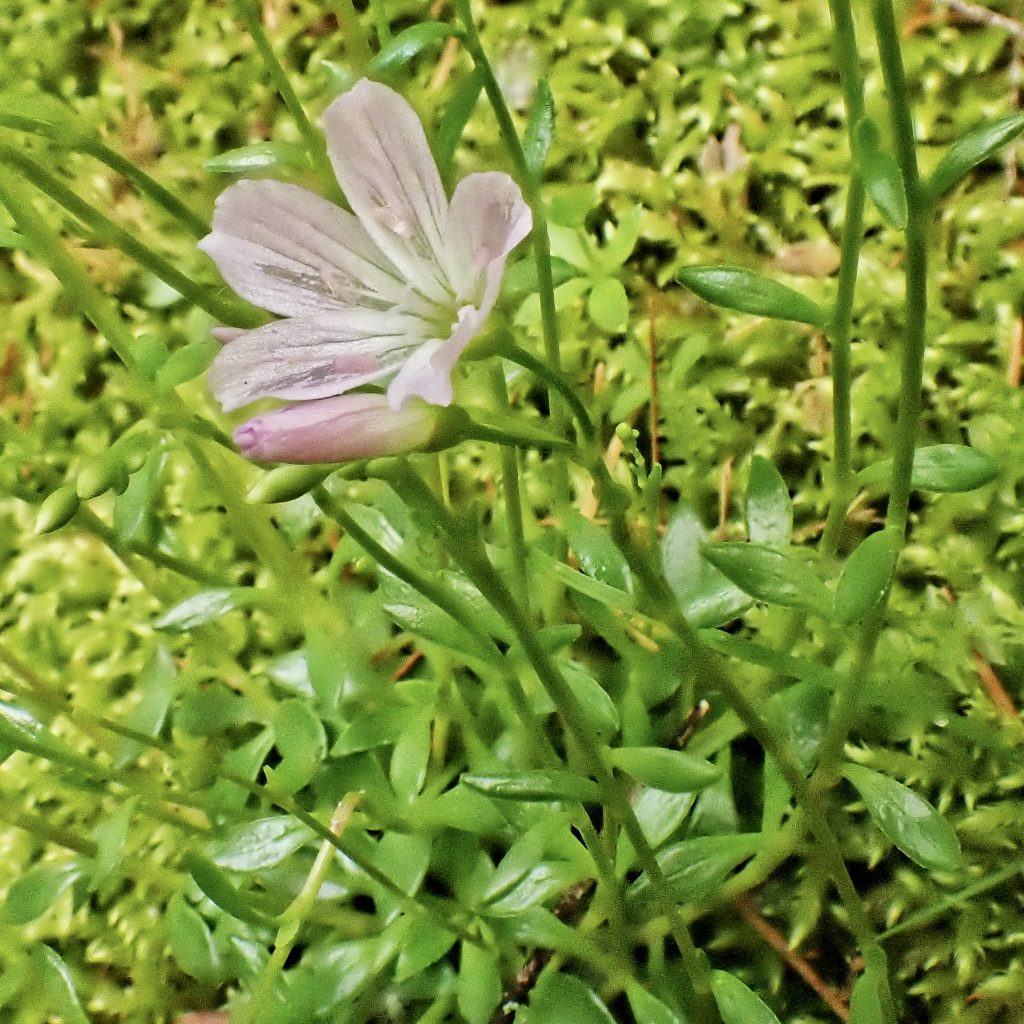
I have had a bit of a mental block with the species in the genera Montia and Claytonia. Back in 2010 when I started trying to identify wildflowers the fact that some that I was just learning turned out to have been moved from Montia to Claytonia kinda blew my little, taxonomically unsophisticated mind, and I sort of gave up on the group. Then, when confronted on Michael Palmer’s post wildfire property by the three species that I had lumped together as Claytonia perfoliata , I started looking into them, and realized that not only was it not as complicated as I’d thought, but that there were still species in Montia, and it wasn’t that hard to tell the genera apart.
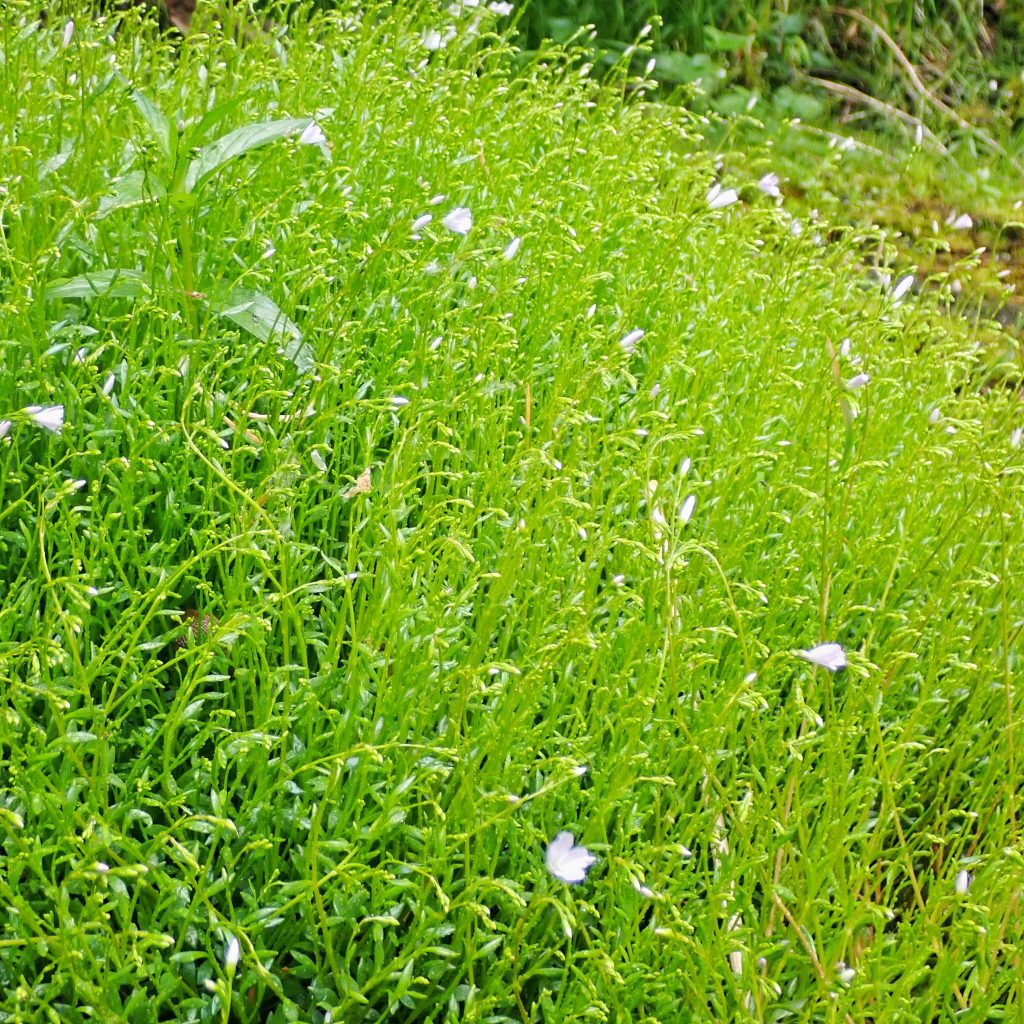
I still haven’t delved into getting a real handle on the species in the two genera, but that is an allocation of mental resources situation, not a fear based ‘I’m not smart enough to figure this out’ thing, which is an improvement. And when I saw these pretty little flowers growing in the same seeps as the Dodecatheon dentatum, I knew right away that they were a Montia sp., based on the alternating leaves that grew right up the stems. And my photos and a few notes I took were enough, once I’d gotten back to my books, to convince me that these were Montia parvifolia, with the appropriate common name of littleleaf montia, which is fortuitously a literal translation of their specific epithet.
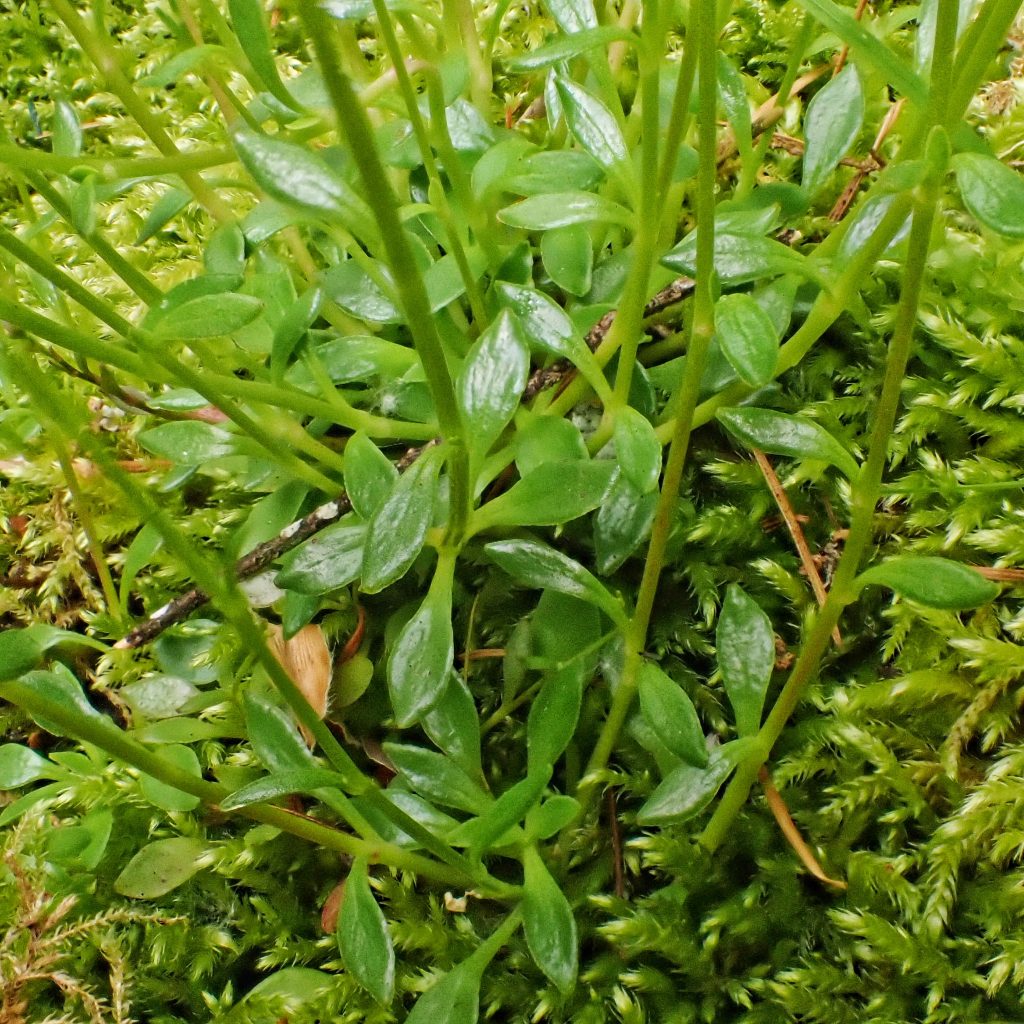
Ethnobotany– I can find no ethnobotanical information on this species, but I’d be surprised if indigenous people didn’t at least occasionally eat these succulent greens.
Description– Perennials with 7-15mm long flower petals; “6-12”…Many small rosettes of basal leaves. Stolons present, often reddish. Basal leaves many, oval, fleshy, 1/2 in. long; stem leaves smaller, alternate, often replaced with fleshy bulblets. Flowering stems unbranched, topped with clusters of 5-petaled white or pink flowers with deeper pink veins.” Montia parvifolia | Littleleaf Montia | Wildflowers of the Pacific Northwest
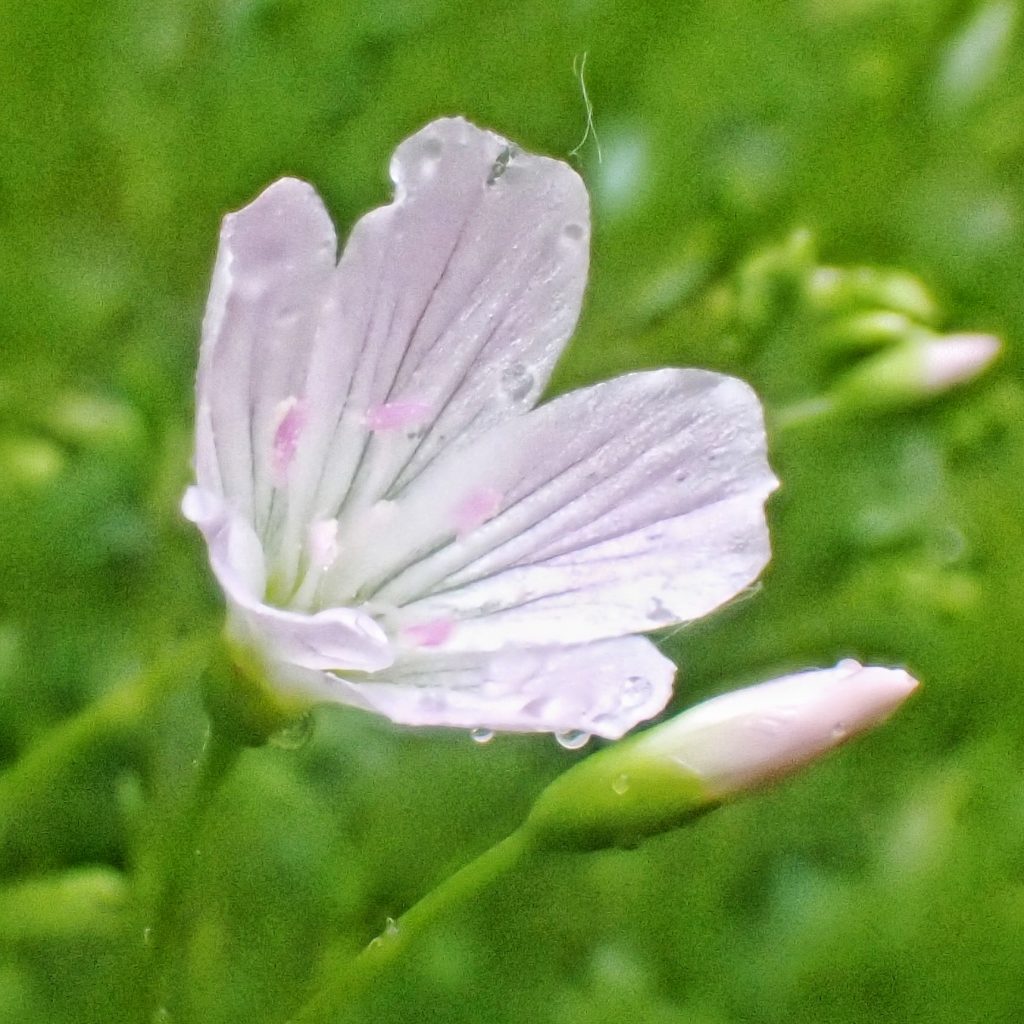
Similar species– Montia diffusa, M. howellii, M. dichotomy, and M. linearis have flower petals less than 7mm long, usually have branched stems, never have bulblets in flower axis, and are annuals; M. chamissoi and M. fontana have opposite leaves that do not get much smaller as they go up the stem; Claytonia spp. all lack stem leaves, having only basal leaves and a single pair of opposite leaves at the top of the stem.
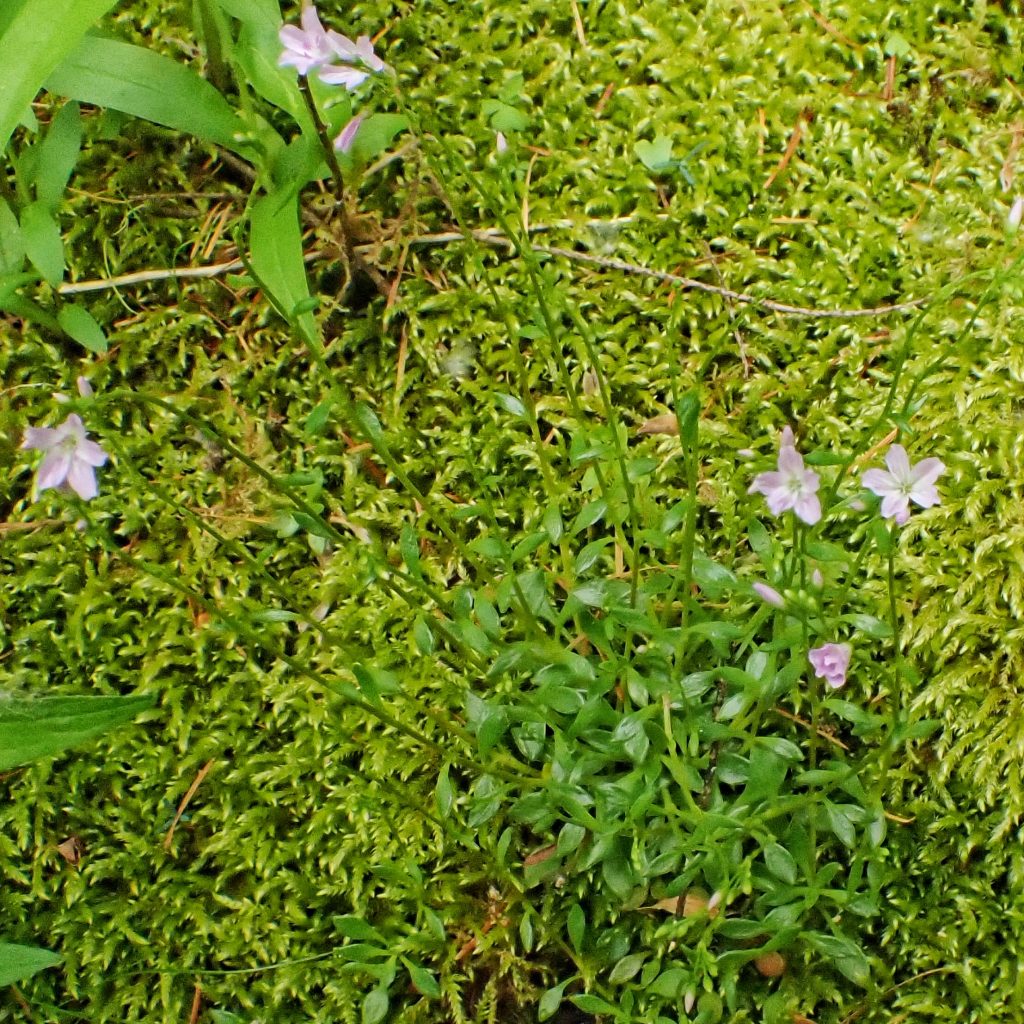
Habitat– “Grows in wet mosses along streams, in wet rocks from beach to alpine areas, sometimes in large patches.” Montia parvifolia | Littleleaf Montia | Wildflowers of the Pacific Northwest; “Moist or wet soils and rocky cliffs of coastal and inland mountains” FNA: Montia parvifolia
Range– Western North America; in our region it is found from the east side of the Cascades, west to the Pacific, as well as in the Blues, Wallowas, and the Rockies and associated ranges, and in nw California/sw Oregon.
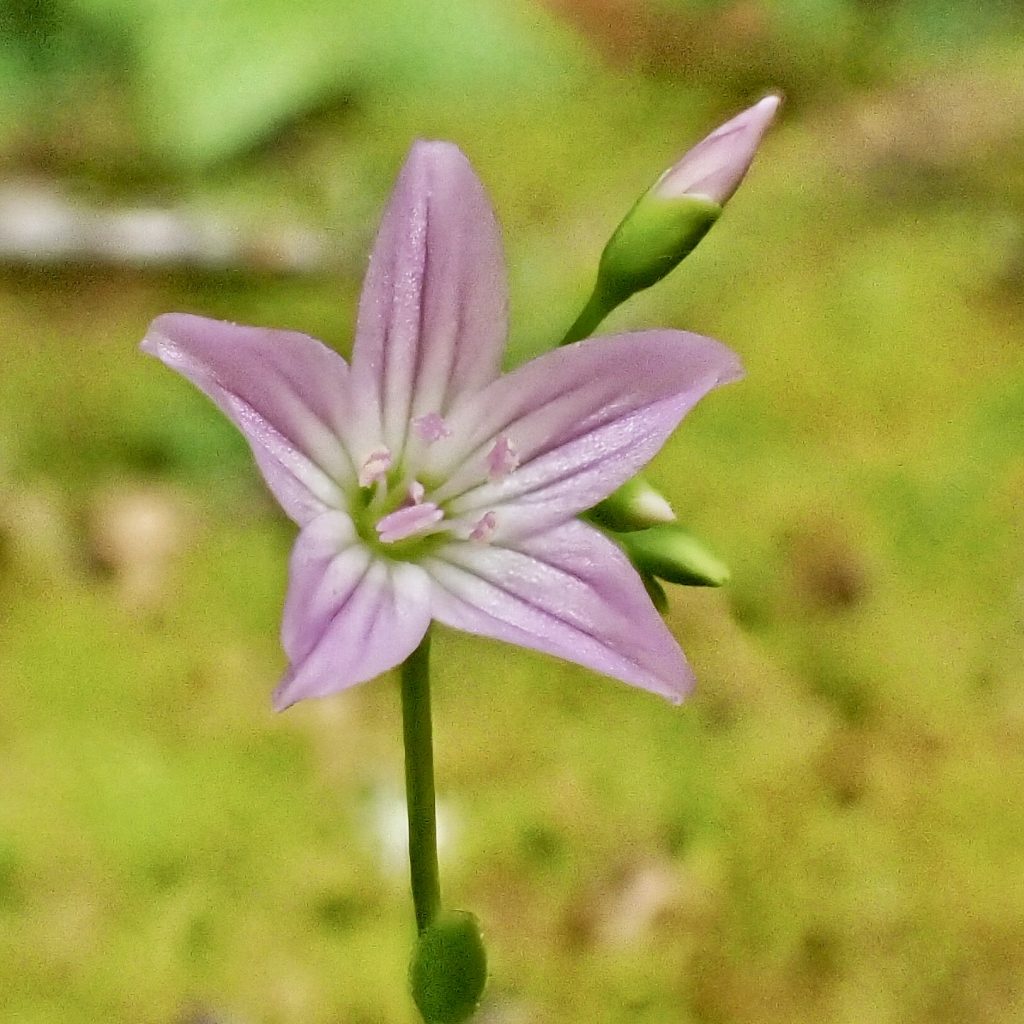
Eaten by– I can find no information on what eats this plant, but I’d be surprised if there were no insects that use it as a larval host, and I feel certain that there are pollinators which utilize its nectar and pollen, as well as herbivorous vertebrates that browse its foliage.
Reproductive timing– Flowers bloom from late April through July, depending on elevation and latitude.
Etymology of names– Montia is an homage to Giuseppe Monti (1682-1760) an Italian botanist and chemist. The specific epithet parvifolia is from the Latin words for ‘little’ and ‘leaf’, a reference to the diminutive foliage of this plant, especially that growing from the stem.
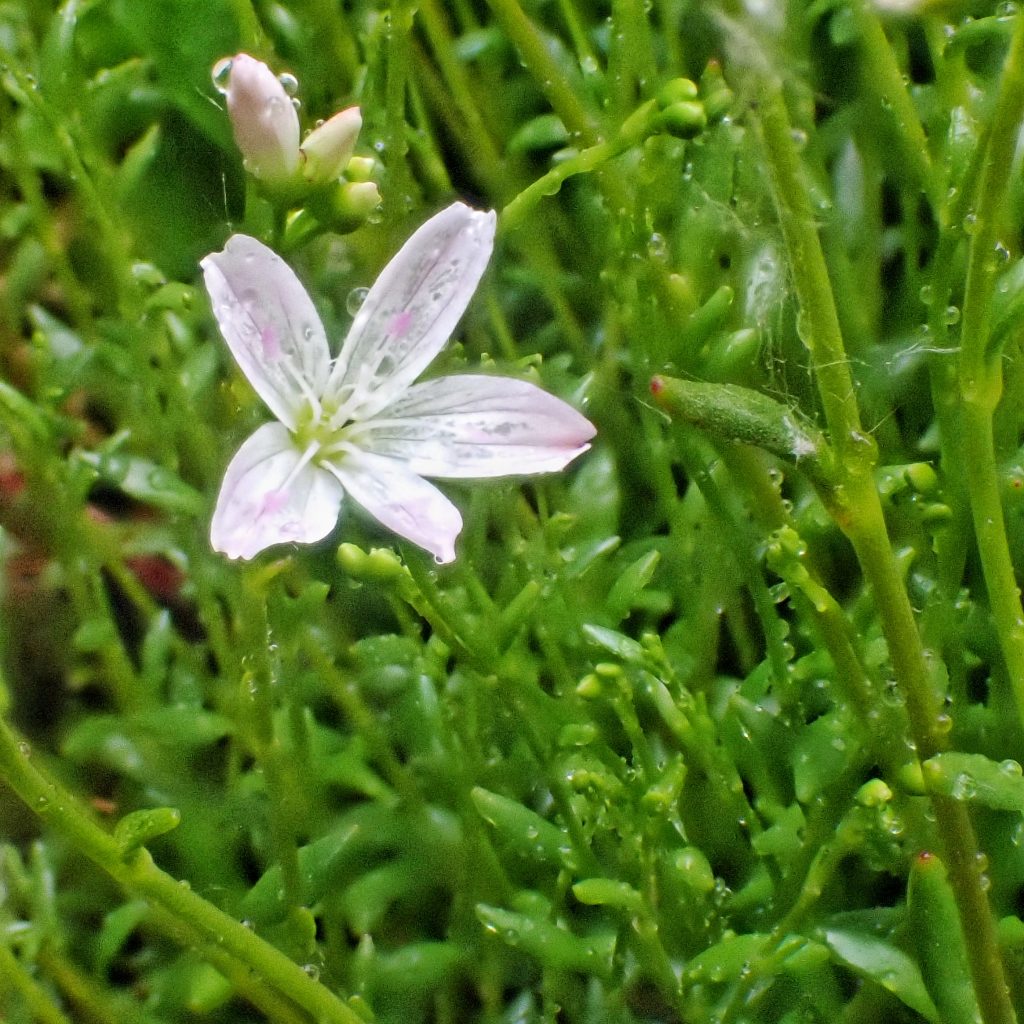
Montia parvifolia | Littleleaf Montia | Wildflowers of the Pacific Northwest
